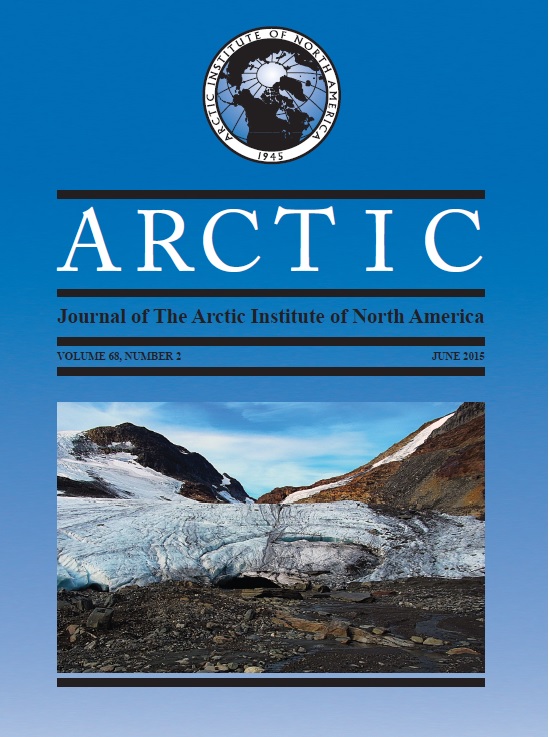Seasonal Movements and Diving of Ringed Seals, <i>Pusa hispida</i>, in the Western Canadian Arctic, 1999–2001 and 2010–11
DOI:
https://doi.org/10.14430/arctic4479Keywords:
ringed seal, satellite telemetry, Amundsen Gulf, Prince Albert Sound, Beaufort Sea, sea ice, diving, foragingAbstract
Satellite-linked time-depth recorders were deployed on 17 ringed seals in early summer in 1999, 2000, and 2010, near the Inuvialuit community of Ulukhaktok, Northwest Territories, Canada. The main objective was to investigate movements and diving behaviour of ringed seals in the Prince Albert Sound (PAS) and eastern Amundsen Gulf (EAG) regions in relation to season, sex, and age-class. Tags performed well on 16 of 17 tagged seals, with average tracking periods of 256 d (SD 69, range: 134 – 352). Adult and subadult ringed seals traveled considerable distances throughout the open water period (mean = 5844 km, range = 1232 – 9473 km), using vast home ranges during this season, shown with 90 Percent Volume Contours (90 PVC) averaging 122 854 km2 for subadults, 76 658 km2 for adult females, and 21 649 km2 for adult males. Overall, adults spent 69.5% of the observed open water days in foraging/resident mode and 22.8% in traveling mode. The majority (75%) of total observed foraging/resident time was spent in PAS and EAG. Eleven of 12 adults made forays outside EAG and PAS to distant areas, including Prince of Wales Strait (7 seals), Viscount Melville Sound (6), Minto Inlet (4), western Amundsen Gulf (4), and six other zones. During open water season, subadults spent 36.8% traveling and 51.4% foraging/ resident, also mainly in EAG and PAS (61%), but they all traveled to distant zones, eight in total. During winter, all tagged adult females, five of seven adult males, and three of four subadults returned to PAS and EAG to occupy winter home ranges that were on average 15% of the size of the open water home range (mean winter ranges = 1299 km2 for adult males, 3599 km2 for adult females, and 30 499 km2 for subadults). The mean size of the winter home ranges varied by as much as a factor of 10 among the three winters examined. Seal movements were most restricted during the winters with extensive fast ice (1999 – 2000 and 2010 – 11) and least restricted during the winter (2000 – 01) when fast ice did not form in EAG. In winter, adult females made more long, deep dives than either adult males or subadults.Downloads
Download data is not yet available.


